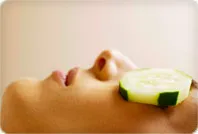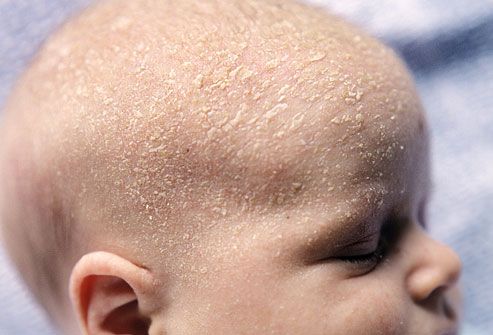If your hectic lifestyle has got you down, experts say relaxation techniques can bring you back into balance -- some in five minutes or less
The kids need a ride to school, your husband can't find his shorts, your boss has just scheduled an online meeting, and your best friend desperately needs your help -- all at the same time.
Is it any wonder that you can't find a minute for relaxation? In fact, if you're like most women, you may have even forgotten how to relax.
And though experts say that some stress is good for you -- it can sharpen your senses and your mind -- too much stress is bad for your mental and physical health. At the same time, relaxation can do wonders to restore balance in your life -- and may even reduce some of the health risks associated with stress.
WebMD talked to the experts to learn more about relaxation -- and how to attain it. What follows are 10 on-the-spot techniques you can use -- any time and almost anywhere -- to reduce the tension in your life.
1. Meditate
If you're thinking
meditation means twisting your body into an uncomfortable position and uttering "oohs" and "omms" for an hour, guess again. Any repetitive action can be a source of meditation, says Herbert Benson, MD, author of
The Relaxation Response and director emeritus of Benson-Henry Institute for Mind Body Medicine in Chestnut Hill, Mass. This includes walking,
swimming, painting, knitting -- any activity that helps keep your attention calmly in the present moment.
When you catch yourself thinking about your job, your relationship or your lifelong to-do list, experts say to simply let the thought escape, and bring your mind back the repetition of the activity. Try it for just 5 to 10 minutes a day and watch stress levels drop.
2. Picture Yourself Relaxed
Is your mind too talkative to meditate? Try creating a peaceful visualization, or "dreamscape." To start, simply visualize anything that keeps your thoughts away from current tensions. It could be a favorite vacation spot, a fantasy island, that penthouse in New York City -- or something "touchable," like the feel of your favorite silk robe or cozy sweater.
The idea is to take your mind off your stress, and replace it with an image that evokes a sense of calm. The more realistic your daydream -- in terms of colors, sights, sounds; even touch and feel -- the more relaxation you'll experience.
3. Breathe Deeply
Feeling stressed evokes tense, shallow breathing, while calm is associated with relaxed breathing, says Michael Lee, author of Turn Stress into Bliss and founder of Phoenix Rising Yoga Therapy in Bristol, Vermont. So to turn tension into relaxation, he says, change the way you breathe.
Try this: Let out a big sigh, dropping your chest, and exhaling through gently pursed lips, says Joan Borysenko, PhD, director of Harvard's Mind-Body Clinical Programs. Now imagine your low belly, or center, as a deep, powerful place. Feel your breath coming and going as your mind stays focused there. Inhale, feeling your entire belly, sides and lower back expand. Exhale, sighing again as you drop your chest, and feeling your belly, back and sides contract. Repeat 10 times, relaxing more fully each time
4. Look Around You
"Mindfulness is the here-and-now approach to living that makes daily life richer and more meaningful," says Claire Michaels Wheeler, MD, PhD, author of
10 Simple Solutions to Stress. It's approaching life like a child, without passing judgment on what occurs. Mindfulness means focusing on one activity at a time, so forget multi-tasking! Staying in the present-tense can help promote relaxation and provide a buffer against
anxiety and depression.
Practice it by focusing on your immediate surroundings. If you're outdoors, enjoy the shape and colors of flowers, hear a bird's call or consider a tree. In the mall, look at the details of a dress in the window, examine a piece of jewelry and focus on how it's made, or window-shop for furniture, checking out every detail of pattern and style. As long as you can keep your mind focused on something in the present, stress will take a back seat.
5. Drink Hot Tea
If you're a coffee-guzzler, consider going green. Coffee raises levels of the notorious stress hormone, cortisol, while green tea offers health and beauty, says Nicholas Perricone, MD, author of 7 Secrets to Beauty, Health, and Longevity.
Chamomile tea is a traditional favorite for calming the mind and reducing stress. And black tea may be a stress-fighter, too, researchers from University College London report. Participants who drank regular black tea displayed lower levels of cortisol, and reported feeling calmer during six weeks of stressful situations than those who drank a placebo with the same amount of caffeine.
6. Show Some Love
Induce the relaxation response by cuddling your pet, giving an unexpected hug to a friend or family member, snuggling with your spouse, or talking to a friend about the good things in your lives, says psychologist Deborah Rozman, PhD, co-author ofTransforming Stress. When you do, you'll be reducing your stress levels.
Why? Experts say social interaction helps your brain think better, encouraging you to see new solutions to situations that once seemed impossible, she says. Studies have also shown that physical contact -- like petting your dog or cat -- may actually help lower blood pressure and decrease stress hormones.
7. Try Self-Massage
When your muscles are tense and you've no time to visit a pro, try this simple self-massage technique from Darrin Zeer, author of Lover's Massage and Office Yoga.Relax, and travel straight to Zen-land.
- Place both hands on your shoulders and neck.
- Squeeze with your fingers and palms.
- Rub vigorously, keeping shoulders relaxed.
- Wrap one hand around the other forearm.
- Squeeze the muscles with thumb and fingers.
- Move up and down from your elbow to fingertips and back again.
- Repeat with other arm.
8. Take a Time-Out
Adults need time-outs, too. So when you sense your temper is about to erupt, Jeff Brantley, MD, author of Five Good Minutes In the Evening, suggests finding a quiet place to sit or lie down and put the stressful situation on hold. Take a few deep breaths and concentrate on releasing tension and calming your heartbeat. Quiet your mind and remember: Time is always on your side, so relax. The stress can wait.
9. Try a Musical Detour
Music can calm the heartbeat and soothe the soul, the experts say. So, when the going gets rough, take a musical stress detour by aligning your heartbeat with the slow tempo of a relaxing song. And you might want to make that a classical tune. Research shows that listening to 30 minutes of classical music may produce calming effects equivalent to taking 10 mg of Valium.
10. Take an Attitude Break
Thirty seconds is enough time to shift your heart's rhythm from stressed to relaxed, Rozman says. The way to do that: Engage your heart and your mind in positive thinking. Start by envisioning anything that triggers a positive feeling -- a vision of your child or spouse, the image of your pet, that great piece of jewelry you're saving up to buy, a memento from a vacation -- whatever it is, conjuring up the thought will help slow breathing, relax tense muscles and put a smile on your face. Rozman says that creating a positive emotional attitude can also calm and steady your heart rhythm, contributing to feelings of relaxation and peace.













